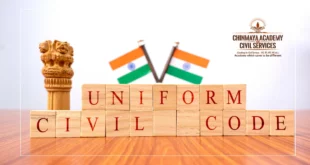Assam Chief Minister has said that the state government will move to ban the practice of polygamy through “legislative action.
Practice of polygamy
- Polygamy is the practice of having more than one married spouse — wife or husband.
- The issue is governed both by personal laws and the Indian Penal Code (IPC).
- Traditionally, polygamy (mainly the situation of a man having more than one wife) was practised widely in India.
- The Hindu Marriage Act, 1955 outlawed the practice.
- IPC Section 494 penalises bigamy or polygamy.
- This provision does not apply to a marriage which has been declared void by a court — for example, a child marriage that has been declared void.
- The law also does not apply if a spouse has been continually absent for the space of seven years. This means a spouse who has deserted the marriage or when his or her whereabouts are not known for seven years, will not bind the other spouse from remarrying.
Under Hindu law
- The Special Marriage Act, 1954, was a radical legislation that proposed the requirement of monogamy.
- Parliament passed the Hindu Marriage Act in 1955, outlawing the concept of having more than one spouse at a time.
- Buddhists, Jains, and Sikhs are also included under the Hindu Marriage Code.
- The Parsi Marriage and Divorce Act, 1936, had already outlawed bigamy.
- Under the HMA bigamy is an offence, and the provisions of sections 494 and 495 of the Indian Penal Code, 1860, shall apply accordingly.
- However, despite bigamy being an offence, the child born from the bigamous marriage would acquire the same rights as a child from the first marriage under the law.
- A crucial exception to the bigamy law for Hindus is Goa, which follows its own code for personal laws.
- A Hindu man in the state has the right to bigamy under specific circumstances mentioned in the Codes of Usages and Customs of Gentile Hindus of Goa.
- These circumstances include a case where the wife fails to conceive by the age of 25 or if she fails to deliver a male child by the age of 30.
- No one has been given the benefit of it since 1910.
Under Muslim law
- Marriage in Islam is governed by the Shariat Act, 1937.
- Personal law allows a Muslim man to have four wives.
- To benefit from the Muslim personal law, many men from other religions would convert to Islam to have a second wife.
- In a landmark ruling in 1995, the Supreme Court in Sarla Mudgal v Union of India held that religious conversion for the sole purpose of committing bigamy is unconstitutional.
- Any move to outlaw polygamy for Muslims would have to be a special legislation which overrides personal law protections like in the case of triple talaq.
Prevalence of polygamy
The National Family Health Survey-5 (2019-20) showed the prevalence of polygamy was:
- 1% among Christians,
- 9% among Muslims,
- 3% among Hindus, and
- 6% among other religious groups.
The data showed that the highest prevalence of polygynous marriages was in the Northeastern states with tribal populations.
SOURCE: THE HINDU, THE ECONOMIC TIMES, PIB
 Chinmaya IAS Academy – Current Affairs Chinmaya IAS Academy – Current Affairs
Chinmaya IAS Academy – Current Affairs Chinmaya IAS Academy – Current Affairs



